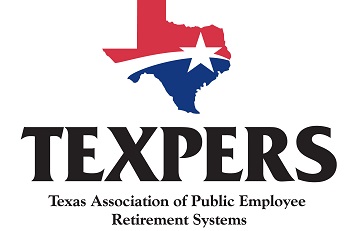We have been writing in this blog that proponents of defined contribution plans for public employees derive their position from a very cheery assessment of the ability of those plans to achieve public employers’ fiscal goals, as though they are a silver bullet cure-all for the problems faced by a city or state.
We aren’t so easily convinced.
And the more questions we ask about the reasons for their faith in DC plans the more our skepticism is increased.
Take for example some exchanges we had recently with Ron Snell, a Senior Fellow at the National Conference of State Legislatures, after a recent joint webinar with the Pew Center on the States, “
Recent State Pension Developments: Are We Gaining Any Ground?” During the webinar, one of our TEXPERS associates asked the presenters about Alaska and it’s 6-year track record of using defined contribution plans. He asked, “How has that worked in terms of reducing or increasing [Alaska’s] underfunded status?” The presenters noted that the switch had been successful in transferring the risk of investment returns from the employer to the employees, but they had little more knowledge of the situation at the time. A few days after the webinar Mr. Snell responded with more information about Alaska:
Alaska closed its defined benefit plans to new state and local government employees and teachers statewide on July 1, 2006. People hired on and after that date are enrolled in defined contribution plans. Employer contribution rates have grown sharply to amounts other states might consider unsustainable. [emphasis added] However, this appears more attributable to the state’s unique commitment to health care benefits for the retired members of its defined benefit plan and to failures to make actuarially-required contributions to the closed plans in the past decade, than to the restructuring of the plan.
It is clear that required contributions to the Alaska defined benefit plan have grown sharply in recent years. [emphasis added] From June 30, 2005 to June 30, 2009, the annually required contribution for the defined benefit plan increased from $337 million to $557 million. (Figures for June 30, 2010, are available but are not comparable to previous-year numbers because they include proceeds from the settlement of a lawsuit). The increase over those five years was 48 percent.
Another measure of the cost of the plans is that the projected employer contribution rate for the Public Employee Retirement System is 35.84 percent of payroll for FY 2013. For the Teachers’ Retirement System, the comparable requirement is 52.67 percent of payroll. Employer contributions are capped at 22 percent for PERS and 12.56 percent for TRS, and the State of Alaska contributes the difference. A recent report on the unfunded liabilities of the Alaska plans estimates the state share of the employer contributions will be $610 million in FY 2013 and will rise to $1.2 billion by FY 2030.
However, it is questionable whether closing the defined benefit plans has been the principal cause of the very high contribution requirements.
· The author of the report, David Teal, director of the Alaska Legislative Finance Division, points out that a distinctive trait of the Alaska defined benefit plans is the inclusion of the cost of health care for retired members in plan funding requirements. Health care costs seem to be the driver of the increase in the required annual contribution for the plans. According to the retirement plans’ Consolidated Annual Financial Report (CAFR) for June 30, 2011, the required annual contribution for retirement annuities actually fell from 2005 through 2009, while the contribution requirement for health care almost tripled over the same period.
· Mr. Teal also points out that flawed actuarial analyses in the years before 2005 led to lower levels of contributions than the funding level of the retirement plans required, when viewed in retrospect with updated actuarial assumptions. The inadequate contributions led to the shifting of costs to the present and future. In part the current and forecasted contribution rates are compensating for past errors of calculation
· In addition, according to Mr. Teal’s report, a statutory limit on employer contribution rate increases in effect for FY 2005 through FY 2007 also led to growth in the unfunded actuarial accrued liabilities of the plans, and shifted contribution requirements to the future.
· Finally, investment losses in the 2007-2009 recession have added to the pressure on contribution rates.
We will have more to say about this and a few other very informative email exchanges we had with Mr. Snell, and we really appreciate his time in helping us understand how these systemic failures occur in places other than Texas. But as you can see, the underfunding crisis that occurred in Alaska was primarily caused by flawed actuarial information and healthcare benefit cost escalations. It wasn’t fund performance. It wasn’t extravagant retirement benefits. It wasn’t poor administrative handling of defined benefit programs.
You should know that, in Texas, healthcare benefits are handled exclusively by the cities at the local levels. Local pension plans have nothing to do with these health care costs or their administration. In fact, many small cities don’t even offer health care to their retirees.
This is a very notable difference and it is one of those details that usually must be dug out to have a fair comparison of apples-to-apples when talking about DB vs DC plans. Again, we bring your attention to the fact that Texas is different than most other states and we encourage serious students of pension dynamics to make sure they don’t make the mistake of comparing apples to oranges.
We’ll take a look at a few more notes with Mr. Snell in future blog posts. – Max Patterson
